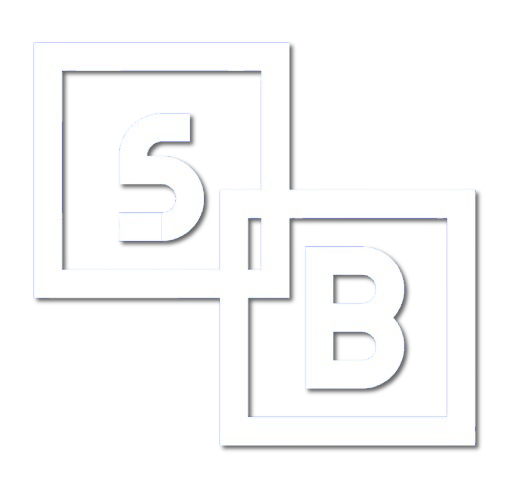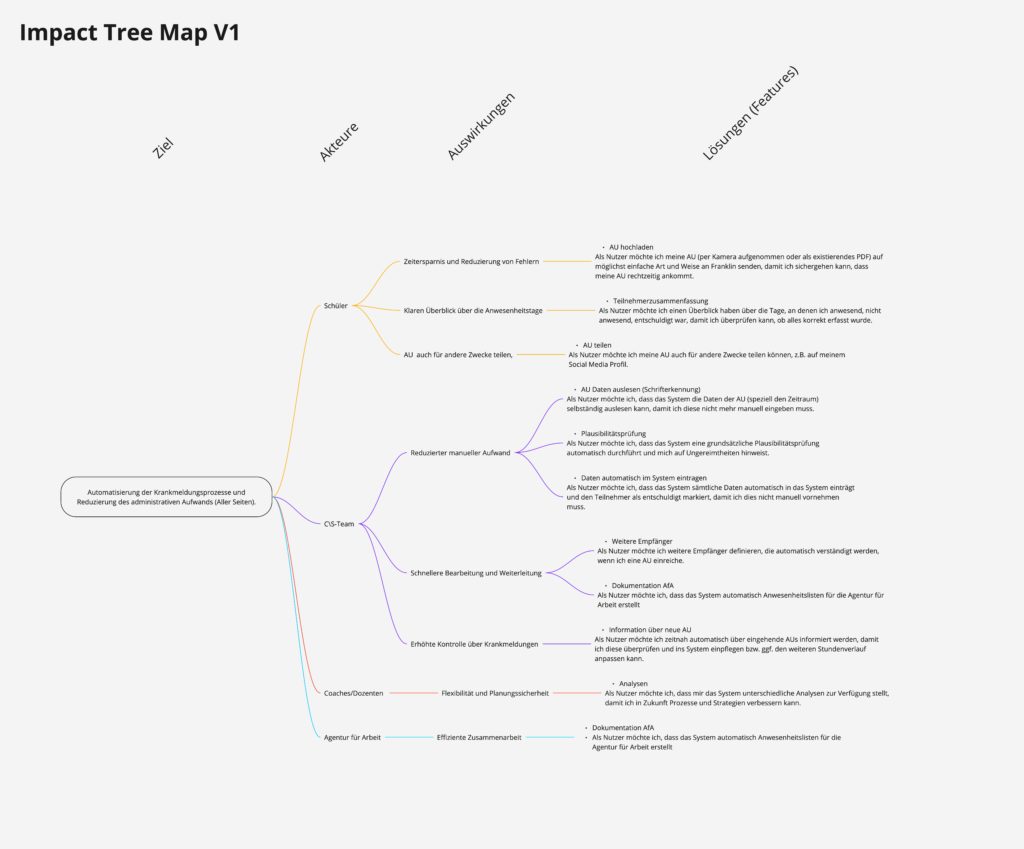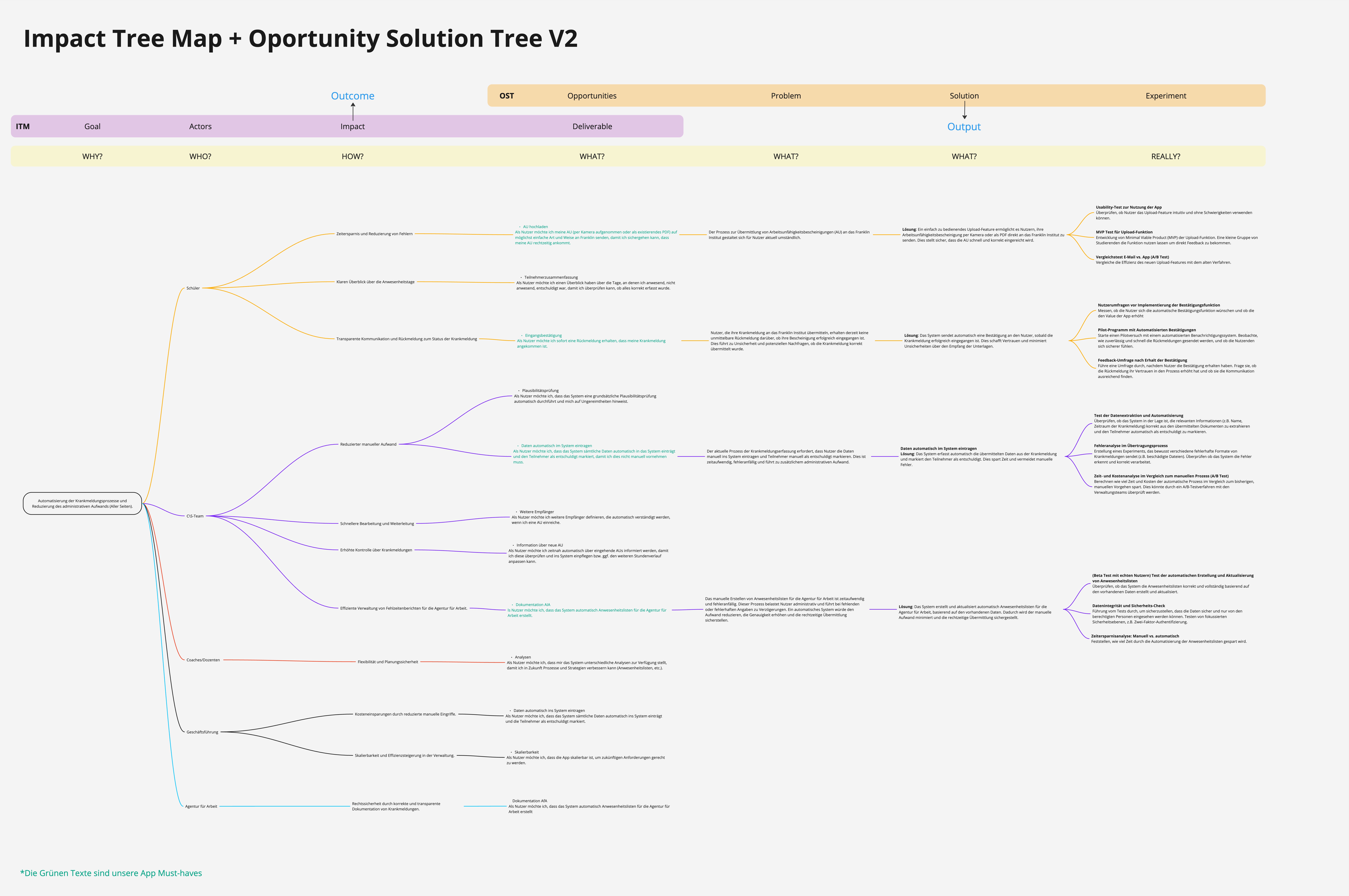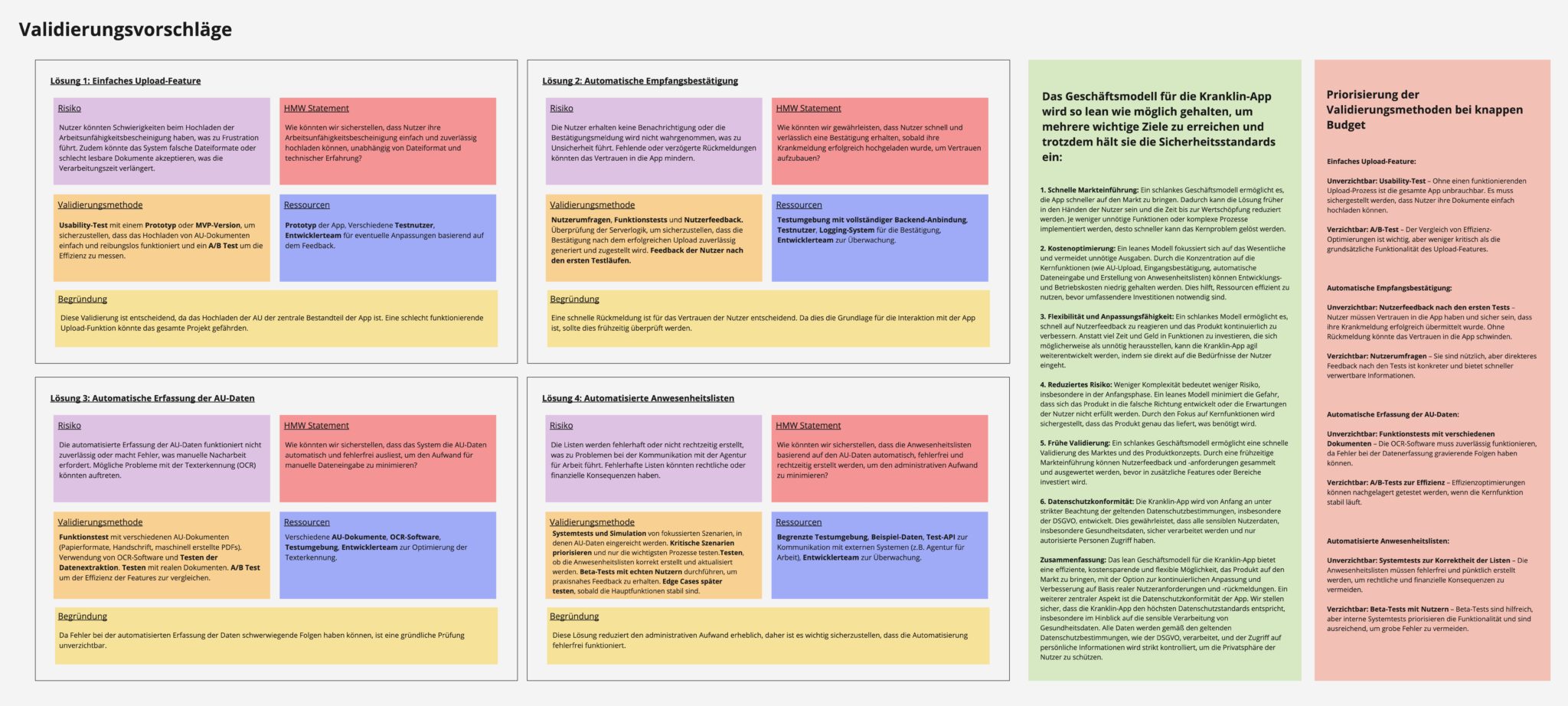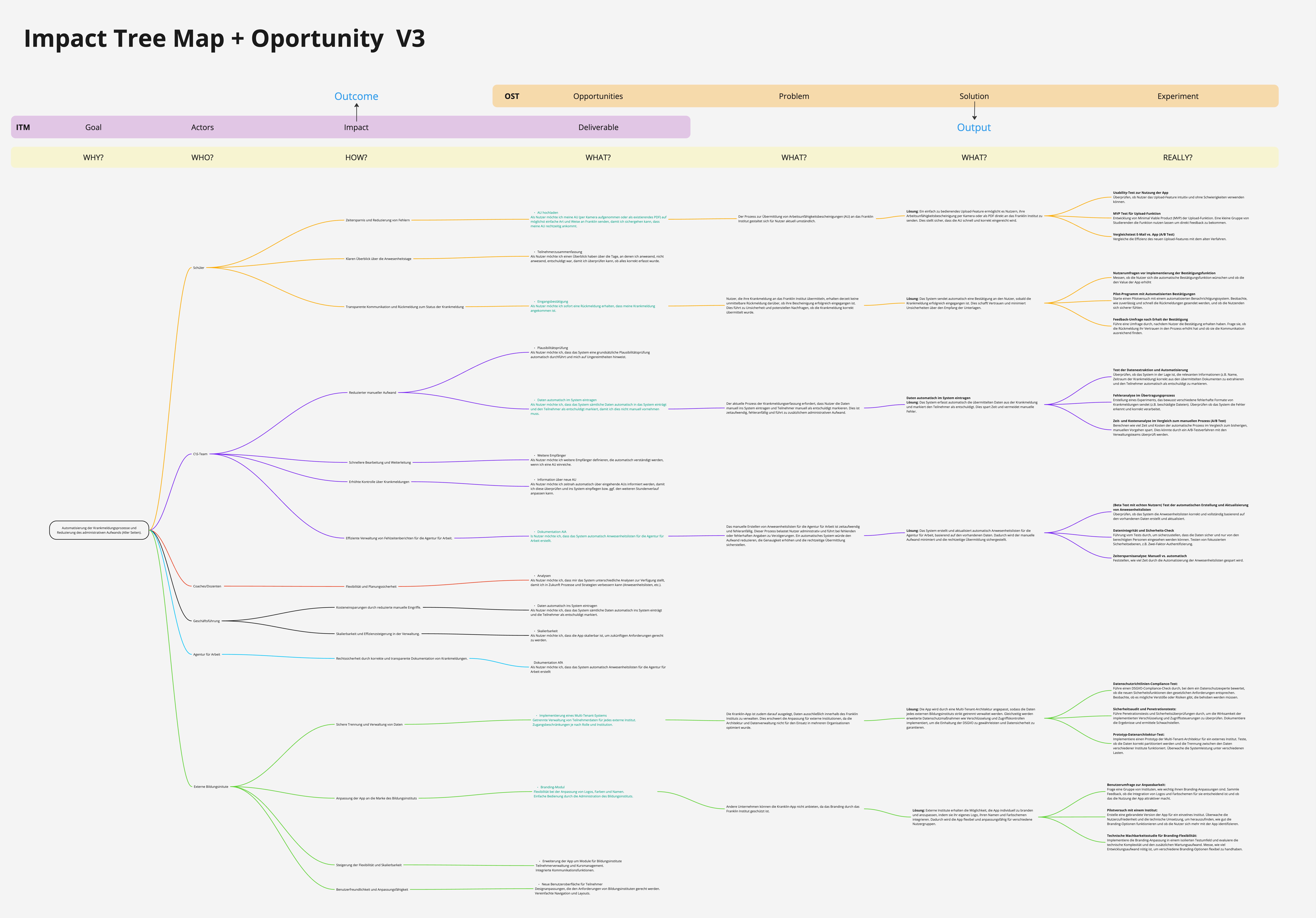Developing the Kranklin App for Franklin IAS: Decision-making Frameworks
Project Overview
This project is fictional and was created as part of a coursework assignment for the Franklin Institute of Applied Sciences.
The Kranklin App project required our team to adapt to an existing initiative initially managed by a previous product manager who had since left the organization. Our objective was to streamline sick leave and attendance management processes, significantly reducing administrative burdens for students, faculty, management, and employment agencies.
Initial Opportunity Solution Tree (Inherited)
We started by analyzing an initial Opportunity Solution Tree created by the previous product manager. However, this version lacked clear prioritization and was not sufficiently aligned with user needs or specific project goals.
Key identified shortcomings included:
- Unstructured list of features.
- Undefined stakeholder needs.
- Lack of user validation and clarity in prioritization.
Stakeholder Interviews
To effectively adapt and refine the existing plan, we conducted targeted stakeholder interviews with students, coaches, the Candidate Success Team, and management. These interviews helped us:
- Clarify user requirements and pain points.
- Understand the necessary core functionalities.
- Refine objectives and identify precise solutions.
Interview with the CS Team
Interview with Management
Interview with a Student
Revised Impact Map & Opportunity Solution Tree (Version 2)
Utilizing insights from stakeholder feedback, we developed an updated and integrated Impact Map combined with an Opportunity Solution Tree. This revised version clearly defined:
- Primary Goal: Automation of sick leave processes to reduce administrative effort and minimize errors.
- Stakeholders: Clearly identified and segmented groups (Students, Coaches, Candidate Success Team, Management, Employment Agencies).
- Key Outcomes: Enhanced efficiency, improved accuracy and transparency, better compliance with legal requirements, and reduced manual workloads.
Validation Strategies
To ensure the effectiveness and reliability of each solution, we conducted specific solution-based validation tests tailored individually to each proposed feature:
- Usability and Prototype Testing: Evaluated the user experience of key features, particularly the document upload functionality.
- OCR & Functional Reliability Testing: Ensured accurate automated data capture and verification to minimize manual interventions.
- System Integration Tests: Verified timely and accurate generation of automated attendance lists for external reporting.
Final Adjustments & Opportunity Solution Tree (Final Version)
Based on validation results, we further refined the Opportunity Solution Tree to finalize the app’s key deliverables and features, including:
Simple Document Upload: Easy submission of sick leave documents via photo or PDF.
Instant Submission Confirmation: Automated notifications ensuring clarity and user confidence.
Automated Data Entry: Reliable OCR data extraction and validation to streamline attendance management.
Automated Attendance Reporting: System-generated attendance lists for employment agency reporting.
Scalability & Customization: A scalable SaaS multi-tenant architecture with customizable branding for educational institutions.
Validation Proposals & Decision Framework
Following the refinement of our solutions, we developed detailed validation proposals and a decision framework for management:
Validation Proposals:
Each solution underwent specific validation testing:
- Simple Document Upload: Usability and A/B testing to ensure smooth user interaction.
- Instant Submission Confirmation: User feedback surveys post-testing to confirm effectiveness.
- Automated Data Entry: Functional tests with various document formats to validate OCR accuracy.
- Automated Attendance Reporting: System tests and beta trials with real users to ensure accurate report generation.
- Scalability & Customization: Technical feasibility studies and pilot branding trials to assess adaptability and reliability.
Management Decision Framework:
- Option 1 (Recommended): Launch MVP immediately while concurrently developing a full-scale SaaS solution. Benefits include early user feedback, faster risk mitigation, and immediate value creation.
- Option 2: Delay the launch until the SaaS version is fully developed. Although ensuring complete stability, this would delay market entry and feedback.
Our strategic recommendation is Option 1 to maximize early validation and iterative improvements.
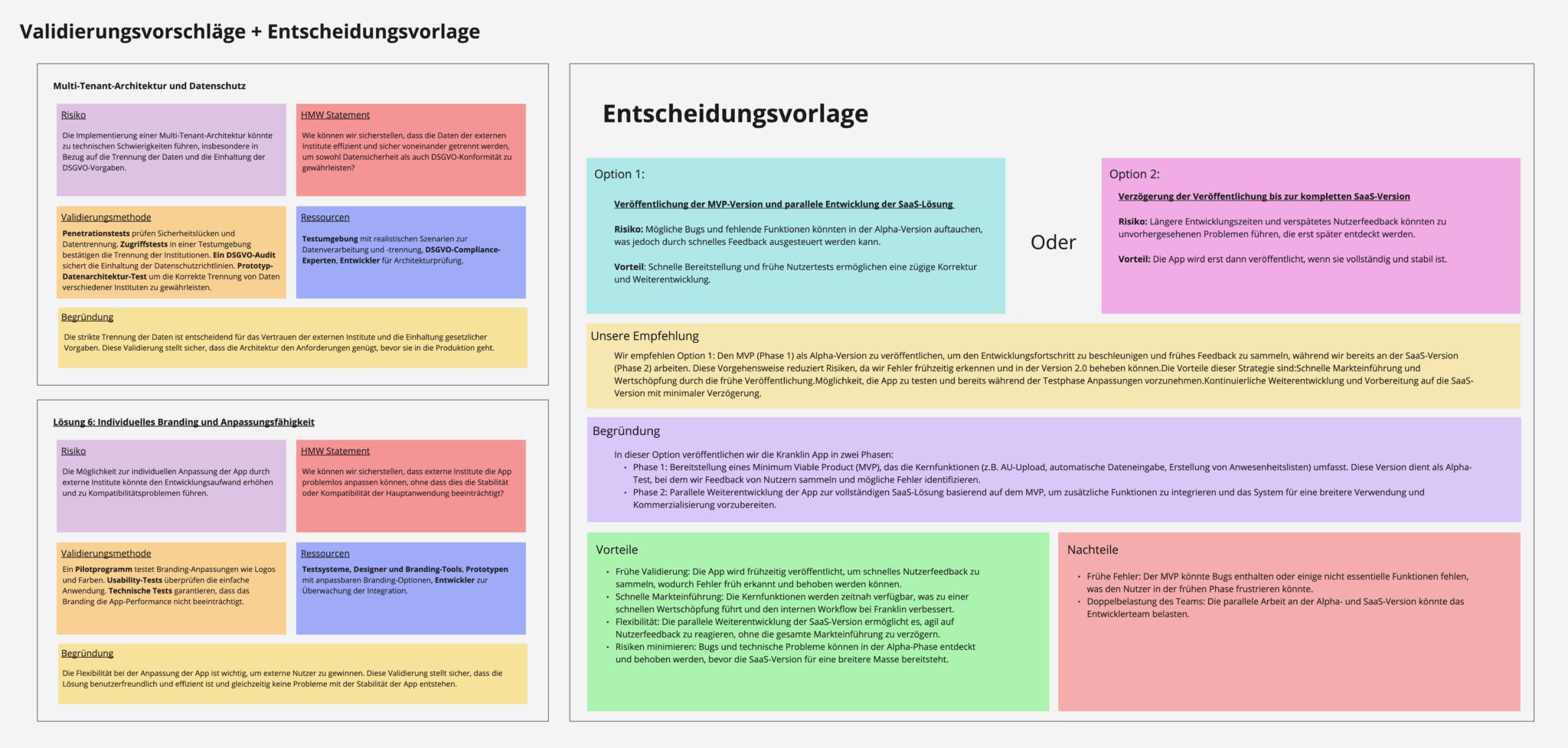
Lean Business Model Alignment
The lean development principles were not only reflected in our implementation strategy, but also shaped our management recommendation process:
- Early MVP Launch: Releasing the core functionalities early aligns with lean methodology by enabling immediate feedback loops and reducing waste.
- Iterative SaaS Development: Building out the full solution in parallel ensures that we remain adaptive to user needs as they evolve, while minimizing the risk of overbuilding.
- Decision Framework Compatibility: The decision framework we proposed supports lean principles by favoring rapid validation (Option 1), early user involvement, and incremental improvements based on real-world use.
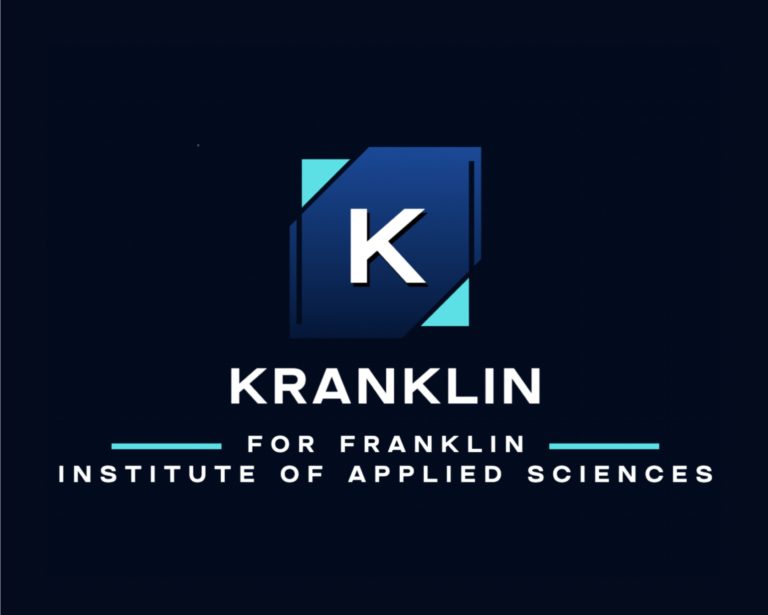
My Role & Final Reflection
This project challenged us to step into an ongoing initiative and make it our own by applying adaptive decision-making, user-centered design, and structured validation. My responsibilities included adapting and enhancing the initial Opportunity Solution Tree, conducting and analyzing stakeholder interviews, overseeing validation strategies, and formulating strategic management recommendations for effective app rollout.
By iteratively refining inherited work and aligning with lean principles, we delivered a well-reasoned strategy for improving sick leave workflows in an educational context. It exemplifies our ability to take ownership, collaborate with stakeholders, and move from ambiguity to clarity—skills that are essential in real-world product management.
